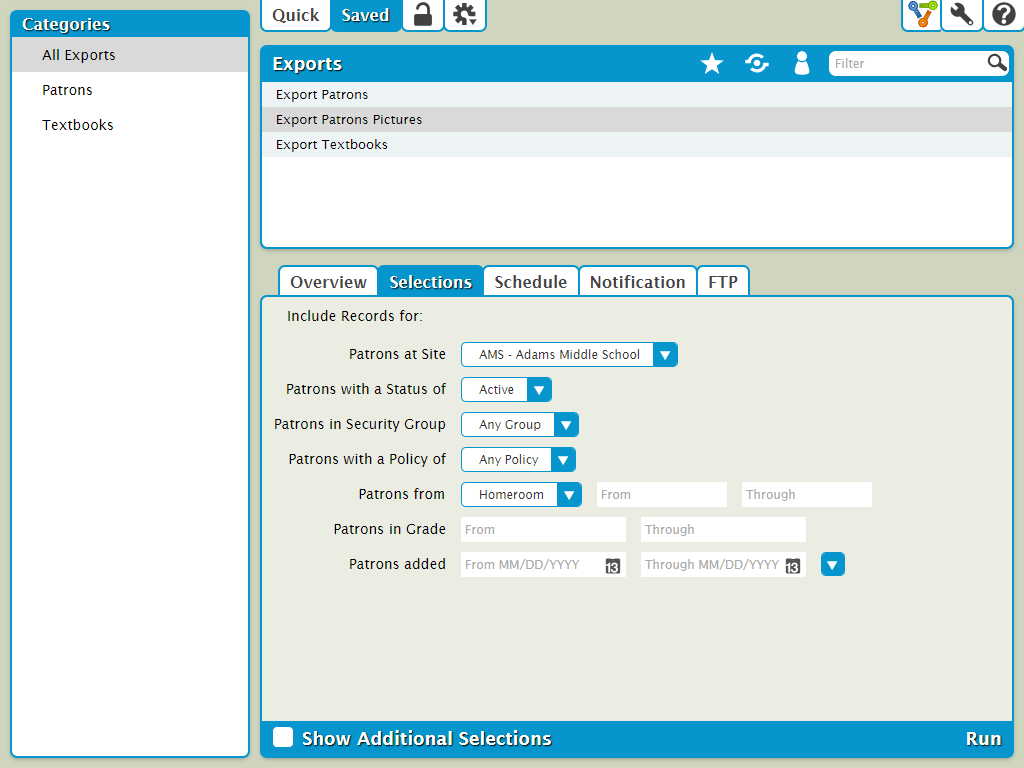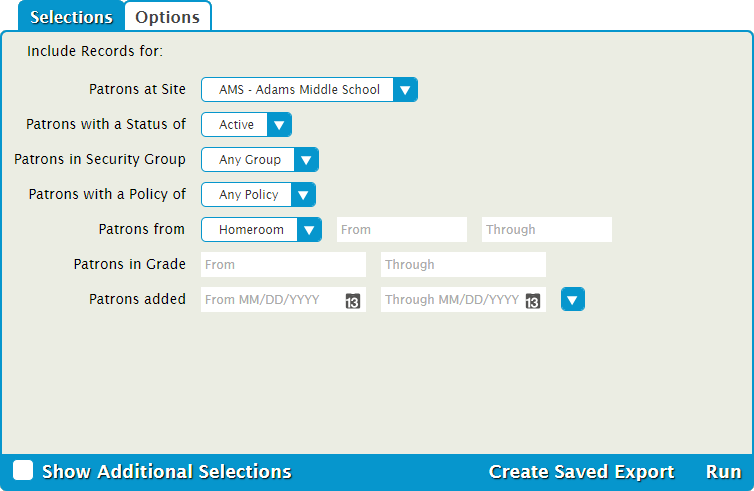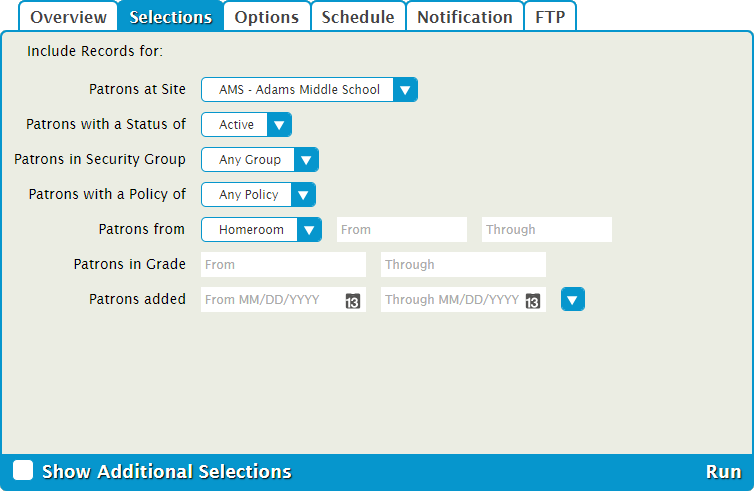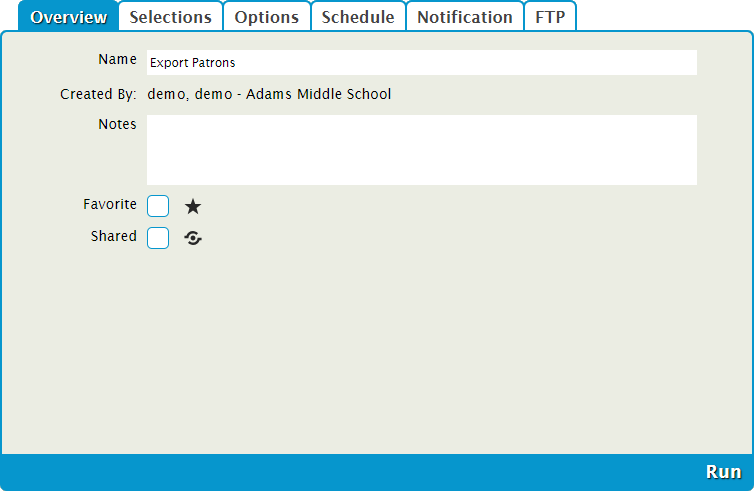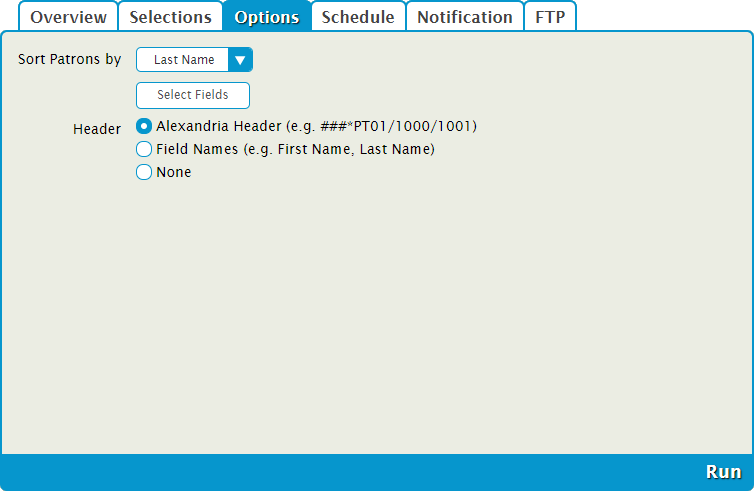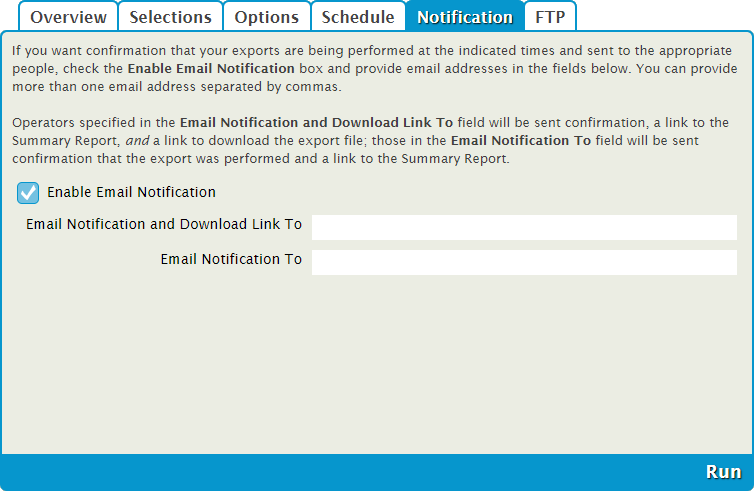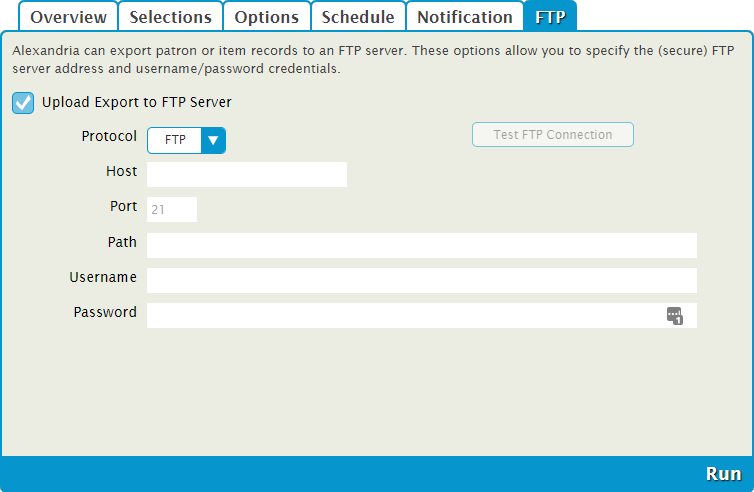Contents
Export Your Data
Textbook Tracker makes it easy to export your data to archive or use in another application. Use our templates to export only the data you want, in the format you want. Exporting item and patron records does not affect the data that exists in your database. The export is only a copy of your data; the original records remain intact. Finished exports can be downloaded as a TXT file in Operations Management.
Toolbar
Quick/Saved. Choose the Quick tab to run a one-time export, or choose the Saved tab to run one of your customized exports.
Lock/Unlock. In a saved export, click the padlock icon to unlock it for editing.
Actions. Options to duplicate or delete a saved export.
Switch Site. In a Central Union, click this icon to change the site you're working in.
Operations Management. Go to Operations Management to view and download your finished exports.
Support. Having trouble? This will open support documentation for this topic in another tab.
Quick/Saved
The list of available exports and the options they contain depend on whether you're in the Quick or Saved tab.
Quick Exports
Quick exports are basically templates that do not store custom selection settings and are mainly used for running one-time exports or as a foundation for custom, saved exports—any modifications made to a particular export are discarded immediately upon clicking on another category or export title. To save the template you’ve just modified, click Create Saved Export at the bottom of the Selected Export pane. After adjusting the default title (optional), your new export—including custom settings—will be added to the Saved tab.
Saved Exports
The Saved tab contains custom exports that you (or others) have created, saved, and shared. Saved exports can also be set to run on a schedule, emailed to the recipient(s) of your choice, and uploaded to an FTP server. Keep in mind that saved exports only retain the selection criteria used to create the export, not the results of the export itself.
Take some time to explore the exports in each category and the options available in each tab, then set up a few saved exports to easily access and run in the future.
Categories
Exports are organized in categories in a list on the left side of the window. Select a category to view the list of associated exports in the Export Selection pane to the right.
- All Exports. This category contains all the available export types.
- Patrons. Export records for all (or a specified group) of patrons.
- Textbooks. Title and copy exports allow you to archive your textbook information, create catalogs for selected items, or modify data for use outside Textbook Tracker.
The list of available exports depends on both the category you've selected and whether you're in the Quick or Saved tab.
Export Selection
Once you've selected a category, the associated exports will be listed in the Exports Selection pane on the right. You can search for a specific title in the filter bar and, in the Saved tab, you can further narrow the list of exports by Favorites, Shared, and Operator. In some ways, these filters far surpass the usefulness of the Categories pane. In fact, you may find yourself never using the Categories filters again, preferring instead to use the All Exports category in conjunction with the filter bar.
Favorite. See the exports marked as Favorite.
Shared. See the exports marked as Shared.
Operator. See the exports that you (the current operator) have saved.
Filter. Enter a term to filter the exports by title.
Remember, the list of available exports directly relates to the category you've selected and the filters you've applied.
Selected Export
Once you've sufficiently narrowed your filter criteria, scroll through the Export Selection list to locate and select the specific export you would like to view, modify, or run. Each tab contains the settings and options you need to configure how your export is ordered, organized, scheduled, and presented. Quick exports have only the Selections and Options tabs, while Saved exports allow more customization options. The export will populate in the tabs below.
To edit a saved export, first click the padlock icon to unlock it, then modify the data in each tab per your specifications, and click Save when you're done. Click Run to run the export.
Quick Export
Saved Export
The controls at the bottom of the Selected Export pane depend on whether you're viewing a Quick or Saved export.
- Show Additional Selections. View a few additional options to further customize your export.
- Create Saved Export. Save this export with your custom settings so you can run it again later.
- Run. Run your export. When complete, you can view and download it in Operations Management.
The Selections and Options tabs are the same for Quick and Saved exports. The Overview, Schedule, Notification, and FTP tabs are specific to Saved exports.
Overview
The Overview tab serves as an export summary. It includes the title (e.g. Export Unpaid Fines), export creator, usage notes (e.g. Run at the end of each month to import into our money management software.), and allows you to mark it as a favorite or shared.
Settings
Name
Enter or edit the name of the export here (e.g. Export Unpaid Fines).
Created By
This information is automatically populated with the creator's name and site ID code.
Notes
You can provide general usage notes here.
Favorite
Mark the export as a favorite. You can filter the results in the Export Selection pane to show only those marked as Favorite, which is especially helpful if you find yourself running the same exports regularly.
Shared
Mark the export as shared. You can filter the results in the Export Selection pane to show only those marked as Shared. Sharing frequently-used exports with other operators is often helpful when particular exports are frequently performed.
Selections
The Selections tab is where you build, format, arrange, limit and/or expand the export to suit your needs. If you find some of your exports lacking the necessary selection information, try checking the Show Additional Selections box for more options. The settings in this tab vary per export.
Options
Choose sort and format options here. The settings in this tab vary per export.
Schedule
Use these settings to schedule this export to run on a regular basis. For example, if you want it to run every Saturday at 10:00 p.m, set the following:
- Frequency: Weekly
- On: Saturday
- At: 10:00 PM
The scheduled time is the time the export is added to your Operations queue. Depending on how busy your queue is, the export may or may not be complete at that exact time.
Settings
Schedule
Check this box to unlock the scheduling capabilities.
Frequency
This dropdown menu allows you to specify how often you would like to repeat this export: Once, Daily, Weekly, Monthly, or Yearly.
On
The options here depend on the frequency you selected above.
Once. Choose the date to run this export.
Daily. On options are not necessary.
Weekly. Choose the day the export will run each week.
Monthly. Choose the date the export will run each month.
Yearly. Choose the month and date the export will run each year.
At
Choose the time of day, including a.m. or p.m., to run the export.
Notification
Here you can enable an email confirmation and link to download the file to be sent to the recipient(s) of your choice once the export is complete.
Settings
Enable Email Notification
Check this box if you want to enable email notifications to be sent upon completion.
Email Notification To
Enter the recipient email addresses. You can provide more than one email address separated by commas.
- For example: johndoe@examplelibrary.com,janedoe@examplelibrary.com
FTP
Textbook Tracker can save finished exports to an FTP server. These options allow you to specify the (secure) FTP server address and username/password credentials.

